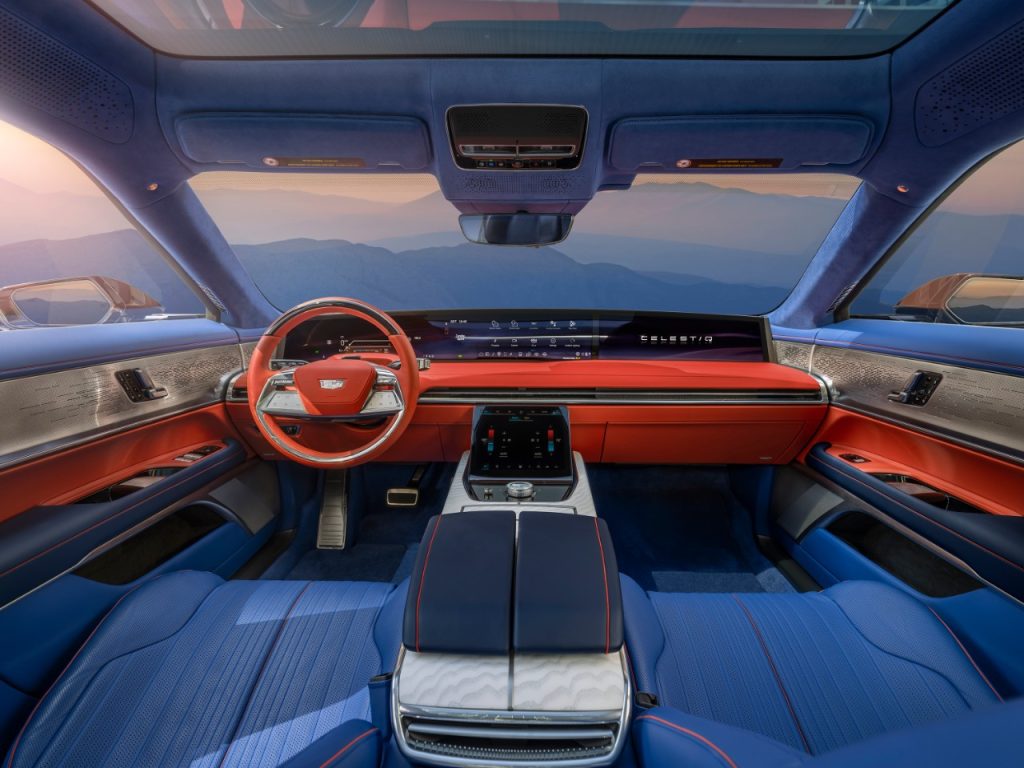US multinational vehicle manufacturer General Motors is expanding its use of additive manufacturing (AM) from prototyping into low-volume production, starting with the Cadillac CELESTIQ. The luxury, hand-built electric sedan integrates more than 130 3D printed components—developed at GM’s Additive Industrialization Center (AIC) in Warren, Michigan—to support customized vehicle design.
“When looking at whether to use additive manufacturing, we ask ‘can it meet the functional requirements, and does it make sense economically?’ If the answer is yes to both, we know we should target AM,” says Brennon White, GM technical specialist for advanced manufacturing production applications. “That’s what we did with CELESTIQ – and additive gave us something that we never could have achieved otherwise.”

From Prototype to Production
GM has used additive manufacturing for decades to develop functional prototypes, streamlining engineering processes and reducing development time. With the CELESTIQ, the company has begun applying the technology to production.
Among the 3D printed components in the vehicle is the steering wheel center, created using metal laser powder bed fusion, enabling intricate shapes and embedded features like LED lighting. The part serves as a trim bezel surrounding the steering wheel’s switches and is GM’s largest 3D printed metal component in production.
“We wanted the part to be metal, fitting with the high-end look and feel of the vehicle,” says White. “We looked at multiple options to make this part, and additive won out because it can make a delicate, detailed, and compact part.”

Another innovation is the seat belt adjustable guide loop—GM’s first 3D printed metal safety component. The part consolidates multiple pieces into a single strong, continuous form and received the 2024 Award of Distinction in the Automotive—Electric Vehicle Category for Metal AM components from the Metal Powders Industry Federation.
“None of the finishes we could find met the high-end needs for this outstanding vehicle,” says White. “Using additive manufacturing allowed us to consolidate several parts into one continuous piece. Not only is it effortlessly beautiful, but the part is also incredibly strong.”

AM in Automotive Applications
The Additive Industrialization Center (AIC), opened in 2020, is GM’s hub for additive technology development. The 15,000-square-foot facility houses more than 20 machines capable of printing in both metal and polymer. Parts for the CELESTIQ—such as window switches, grab handles, console décor, and internal structural supports—are initially developed at AIC before transitioning to suppliers for production.
The CELESTIQ currently contains the highest number of 3D printed parts in any GM vehicle. But additive manufacturing is also being used across other GM models. The Cadillac V-Series Blackwing lineup was the first to feature AM parts in production, including a medallion on the manual shifter. The technology is also utilized in Cadillac Racing’s motorsport applications.
Additive Manufacturing in Automotive
The role of 3D printing in automotive manufacturing is growing, as car makers target material, cost, and time savings for prototyping, tooling, and end-use parts.
In March, Honda announced it is investigating how laser powder bed fusion (LPBF) technology can “add new value to manufacturing processes.” Based in Minato, Tokyo, the global car maker says that 3D printing unlocks fast and efficient production of complex shapes at lower costs than conventional methods. It also pointed to the potential of 3D printing “smart factories” that could “significantly shorten the process from development to mass production.”
Elsewhere, Japanese SUV manufacturer Subaru Corporation utilized HP Inc.‘s Multi Jet Fusion technology to 3D print parts for its Legacy Outback Boostgear Package concept car. Announced at Tokyo Auto Salon 2024, the collaboration with HP Japan and DMM.make 3D Print is exploring new additive manufacturing possibilities in automotive design and production.
More recently, Ford Motor Company announced it is using 3D printing to prepare for its first F1 race in two decades. Set to compete during the 2026 season, Ford has already produced over 1,000 3D printed car parts at its additive manufacturing labs, including cold plates for batteries and cooling plates for other systems. These will feed into the race cars’ combustion engine and hybrid technology.
Take the 3DPI Reader Survey — shape the future of AM reporting in under 5 minutes.
Who won the 2024 3D Printing Industry Awards?
Subscribe to the 3D Printing Industry newsletter to keep up with the latest 3D printing news.
You can also follow us on LinkedIn, and subscribe to the 3D Printing Industry Youtube channel to access more exclusive content.
Featured image shows CELESTIQ, a hand-built electric sedan. Image via: General Motors.
